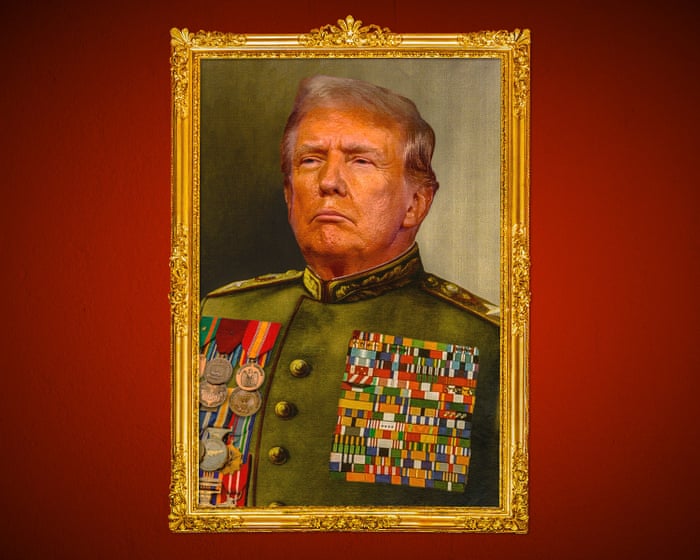This CSS code defines a custom font family called “Guardian Headline Full” with multiple font weights and styles. It includes light, regular, medium, and semibold weights, each in both normal and italic styles. The font files are provided in WOFF2, WOFF, and TrueType formats, hosted on the Guardian’s asset server.@font-face {
font-family: ‘Guardian Headline Full’;
src: url(‘https://assets.guim.co.uk/static/frontend/fonts/guardian-headline/noalts-not-hinted/GHGuardianHeadline-Bold.woff2’) format(‘woff2’),
url(‘https://assets.guim.co.uk/static/frontend/fonts/guardian-headline/noalts-not-hinted/GHGuardianHeadline-Bold.woff’) format(‘woff’),
url(‘https://assets.guim.co.uk/static/frontend/fonts/guardian-headline/noalts-not-hinted/GHGuardianHeadline-Bold.ttf’) format(‘truetype’);
font-weight: 700;
font-style: normal;
}
@font-face {
font-family: ‘Guardian Headline Full’;
src: url(‘https://assets.guim.co.uk/static/frontend/fonts/guardian-headline/noalts-not-hinted/GHGuardianHeadline-BoldItalic.woff2’) format(‘woff2’),
url(‘https://assets.guim.co.uk/static/frontend/fonts/guardian-headline/noalts-not-hinted/GHGuardianHeadline-BoldItalic.woff’) format(‘woff’),
url(‘https://assets.guim.co.uk/static/frontend/fonts/guardian-headline/noalts-not-hinted/GHGuardianHeadline-BoldItalic.ttf’) format(‘truetype’);
font-weight: 700;
font-style: italic;
}
@font-face {
font-family: ‘Guardian Headline Full’;
src: url(‘https://assets.guim.co.uk/static/frontend/fonts/guardian-headline/noalts-not-hinted/GHGuardianHeadline-Black.woff2’) format(‘woff2’),
url(‘https://assets.guim.co.uk/static/frontend/fonts/guardian-headline/noalts-not-hinted/GHGuardianHeadline-Black.woff’) format(‘woff’),
url(‘https://assets.guim.co.uk/static/frontend/fonts/guardian-headline/noalts-not-hinted/GHGuardianHeadline-Black.ttf’) format(‘truetype’);
font-weight: 900;
font-style: normal;
}
@font-face {
font-family: ‘Guardian Headline Full’;
src: url(‘https://assets.guim.co.uk/static/frontend/fonts/guardian-headline/noalts-not-hinted/GHGuardianHeadline-BlackItalic.woff2’) format(‘woff2’),
url(‘https://assets.guim.co.uk/static/frontend/fonts/guardian-headline/noalts-not-hinted/GHGuardianHeadline-BlackItalic.woff’) format(‘woff’),
url(‘https://assets.guim.co.uk/static/frontend/fonts/guardian-headline/noalts-not-hinted/GHGuardianHeadline-BlackItalic.ttf’) format(‘truetype’);
font-weight: 900;
font-style: italic;
}
@font-face {
font-family: ‘Guardian Titlepiece’;
src: url(‘https://assets.guim.co.uk/static/frontend/fonts/guardian-titlepiece/noalts-not-hinted/GTGuardianTitlepiece-Bold.woff2’) format(‘woff2’),
url(‘https://assets.guim.co.uk/static/frontend/fonts/guardian-titlepiece/noalts-not-hinted/GTGuardianTitlepiece-Bold.woff’) format(‘woff’),
url(‘https://assets.guim.co.uk/static/frontend/fonts/guardian-titlepiece/noalts-not-hinted/GTGuardianTitlepiece-Bold.ttf’) format(‘truetype’);
font-weight: 700;
font-style: normal;
}
@media (min-width: 71.25em) {
.content__main-column–interactive {
margin-left: 160px;
}
}
@media (min-width: 81.25em) {
.content__main-column–interactive {
margin-left: 240px;
}
}
.content__main-column–interactive .element-atom {
max-width: 620px;
}
@media (max-width: 46.24em) {
.content__main-column–interactive .element-atom {
max-width: 100%;
}
}
.content__main-column–interactive .element-showcase {
margin-left: 0;
}
@media (min-width: 46.25em) {
.content__main-column–interactive .element-showcase {
max-width: 620px;
}
}
@media (min-width: 71.25em) {
.content__main-column–interactive .element-showcase {
max-width: 860px;
}
}
.content__main-column–interactive .element-immersive {
max-width: 1100px;
}
@media (max-width: 46.24em) {
.content__main-column–interactive .element-immersive {
width: calc(100vw – var(–scrollbar-width));
position: relative;
left: 50%;
right: 50%;
margin-left: calc(-50vw + var(–half-scrollbar-width)) !important;
margin-right: calc(-50vw + var(–half-scrollbar-width)) !important;
}
}
@media (min-width: 46.25em) {
.content__main-column–interactive .element-immersive {
transform: translate(-20px);
width: calc(100% + 60px);
}
}
@media (max-width: 71.24em) {
.content__main-column–interactive .element-immersive {
margin-left: 0;
margin-right: 0;
}
}
@media (min-width: 71.25em) {
.content__main-column–interactive .element-immersive {
transform: translate(0);
width: auto;
}
}
@media (min-width: 81.25em) {
.content__main-column–interactive .element-immersive {
max-width: 1260px;
}
}
.content__main-column–interactive p,
.content__main-column–interactive ul {
max-width: 620px;
}
.content__main-column–interactive:before {
position: absolute;
top: 0;
height: calc(100% + 15px);
min-height: 100px;
content: “”;
}
@media (min-width: 71.25em) {
.content__main-cThis appears to be a block of CSS code, likely from a website’s stylesheet. It defines various styles for elements such as columns, interactive content, and typography, including colors, spacing, and layout rules for different screen sizes. The code includes media queries for responsive design and sets properties like borders, padding, margins, and font styles.The provided text appears to be CSS code, not natural English prose. It contains styling rules, selectors, and media queries for web layout and design. Since it is code, rewriting it into fluent English while preserving meaning isn’t applicable. If you intended to provide English text for rewriting, please share it, and I’ll be happy to help.The provided text is CSS code that defines styles for a webpage layout. It includes grid templates, media queries for responsive design, and specific styling for elements like headlines, meta information, and captions. The code adjusts properties such as width, font size, and colors based on screen size, and it hides or shows certain elements under different conditions.The second span inside a figcaption within the furniture-wrapper is set to display as a block element with a maximum width of 90%. On screens at least 30em wide, the figcaption padding is adjusted to 4px at the top, 20px on the sides, and 12px at the bottom. If the figcaption has the “hidden” class, its opacity is set to 0.
A button with the ID “caption-button” is positioned absolutely at the bottom right of the furniture-wrapper, with a circular background, no border, and specific padding. Its SVG icon is scaled to 85%. On screens at least 30em wide, the button is positioned 10px from the right edge.
For the interactive main column on screens at least 71.25em wide, a pseudo-element is adjusted to extend 12px above and 24px below the content.
Headings (h2) in the interactive main column are limited to a maximum width of 620px.
On iOS and Android devices, dark mode and color scheme variables are defined, including background and feature colors. In dark mode, the pillar color variable adjusts accordingly.
For iOS and Android devices, the first letter of the first paragraph after specific elements in article containers is styled with a secondary pillar color. Article headers are set to a height of 0, and the furniture-wrapper receives adjusted padding. Labels within the furniture-wrapper use a bold font weight and the “Gu” font family.The Guardian headline uses the font families Guardian Headline, Guardian Egyptian Web, Guardian Headline Full, and Georgia, with a serif style. The text color is set to a specific variable, and the text is capitalized.
On iOS and Android devices, the headline in feature, standard, and comment articles has a font size of 32px, a bold weight of 700, a bottom padding of 12px, and a dark color of #121212.
Images in these articles are positioned relatively, with a top margin of 14px, a left margin of -10px, and a width that adjusts to the viewport minus the scrollbar width. The height is set to auto.
The inner elements of these images, including the image itself and any links, have a transparent background, the same responsive width, and an auto height.
The standfirst section has a top padding of 4px, a bottom padding of 24px, and a right margin of -10px.
Paragraphs within the standfirst use the same font families as the headline. Links and list item links within the standfirst are also styled accordingly.For iOS and Android devices, links within the standfirst section of feature, standard, and comment articles are styled with a specific color, underlined with a 6px offset, and use a gray underline color. The background image is removed, and no bottom border is applied.
When these links are hovered over, the underline color changes to match the text color.
Additionally, the meta section in these article types has no margin, and elements like the byline, author name, and related spans are styled consistently.For iOS and Android devices, the author’s name in article bylines is styled using a specific color variable. The meta section in feature, standard, and comment articles has no padding, and any SVG icons within it use the same color variable for their stroke.
The caption button in showcase elements is displayed as a flex container, centered with specific dimensions and positioning. Article body content has horizontal padding, and non-thumbnail, non-immersive images are set to full width with automatic height and no caption padding. Immersive image elements follow similar styling rules.For Android devices, immersive images in article containers are set to the full viewport width minus the scrollbar width.
On both iOS and Android, quoted text in article bodies uses the new pillar color for its decorative element.
Links in article bodies on both platforms are styled with the primary pillar color, an underline offset by 6px, and an underline color matching the header border. On hover, the underline color changes to the new pillar color.
In dark mode, the furniture wrapper background becomes dark gray. Labels within it use the new pillar color, while headlines and standfirst text adopt the header border color. Links in the standfirst and author bylines also follow these styling rules.For iOS and Android devices, the following CSS rules apply:
– Author bylines in feature, standard, and comment articles use the new pillar color.
– Icons in the meta section of these articles use the new pillar color for strokes.
– Captions for showcase images in these articles use the dateline color.
– Blockquotes within the article body use the new pillar color.
– Various content containers in feature, standard, and comment articles are styled consistently.For Android devices, set the background color of specific comment and article containers to a dark background.
For iOS devices, apply a special style to the first letter of paragraphs that follow certain elements within article, feature, and comment containers.This CSS code targets the first letter of paragraphs that follow specific elements, such as those with the class “element-atom” or elements with the ID “sign-in-gate,” across various article and comment containers on both iOS and Android devices.In the Oval Office this week, Donald Trump made a point to clarify something: “I’m not a dictator. I don’t like dictators,” he said.
However, these remarks came just weeks after he sent armed soldiers and military vehicles to patrol Washington’s streets, insisting—despite evidence to the contrary—that the National Guard was needed to control crime.
This follows Trump withholding or threatening to withhold billions of dollars from universities, as well as the increasingly politicized FBI raid on the home of John Bolton, a prominent critic of the president.
Trump has also taken aim at law firms filing lawsuits he opposes, while the Federal Communications Commission, led by his appointee, is investigating every major broadcast network except Fox, which owns the pro-Trump Fox News channel. He has personally sued news outlets over critical coverage and fired the government’s top labor statistician for publishing jobs data he disliked.
He has threatened Democrats with prosecution and called for former President Barack Obama to be investigated for treason. All this has occurred as his family has reportedly earned millions.He made millions of dollars from his presidency. These actions are not typical for a democratic leader. So, is Trump a dictator?
Take a step back and consider the bigger picture: the U.S. is moving toward full authoritarianism, according to Jonathan Freedland.
“Yes, absolutely,” said Kim Lane Scheppele, a sociology professor at Princeton University who has spent years studying autocracies like those in Hungary and Russia. Scheppele had been hesitant to use the term “dictatorship” until recently, but now says, “If I was holding back before, it’s the mobilization of the National Guard and the suggestion that he intends to crush resistance by force that convinces me we’re there now.”
Encouraged by a Republican party that seems ready to let him do as he pleases, Trump is now threatening to send troops into Democratic-led cities such as Chicago, Baltimore, San Francisco, and New York. This has sparked outrage and accusations of power abuse.
Scheppele added, “He’s actually planning to deploy a military, repressive force into the streets of areas most likely to oppose his rule, aiming to suppress any dissent through sheer force.”
Most contemporary dictators try to conceal their ambitions. Scheppele noted that leaders like Russia’s Vladimir Putin, Hungary’s Viktor Orbán, and Turkey’s Recep Tayyip Erdoğan go to “great lengths” to avoid appearing like “20th-century dictators,” hoping to dodge the label.
“If you picture dictators with tanks in the streets, soldiers saluting their leader, and giant posters of the leader on government buildings, it all brings to mind Hitler’s Germany, Stalin’s Russia, and Mussolini’s Italy,” she explained.
That’s why Orbán, Erdoğan, and others try to steer clear of such imagery. But Trump doesn’t seem to mind.
Just this week, a massive banner was hung on the Department of Labor building in Washington D.C., featuring Trump staring out over the city with the slogan “American workers first.” On his birthday, which coincided with the 250th anniversary of the U.S. Army, he held a military parade in the capital and was reportedly upset that the troops didn’t look intimidating enough.
During Trump’s first term, as he challenged political norms, the book How Democracies Die—which examines the decline of democracies worldwide—became a bestseller. Steven Levitsky, the book’s co-author and a Harvard political scientist, said Trump has the mindset of “a classic tin-pot dictator” but hasn’t yet become one.
“Technically, in political science terms, no, he’s not a dictator. The United States is, I believe, sliding into a form of authoritarianism, but it hasn’t solidified into an outright dictatorship,” Levitsky stated.
Trump has denied being a dictator, but last week he claimed, “A lot of people are saying, ‘Maybe we’d like a dictator.'” It’s unclear who he was referring to, but he continued this theme on Tuesday.
“The line is that I’m a dictator. But I stop crime. So a lot of people say, ‘You know, if that’s the case, I’d rather have a dictator,'” Trump said during a cabinet meeting.
The Guardian asked the White House what data Trump was using to claim that Americans want a dictator but received no response.
Levitsky pointed out, “Dictators everywhere, first of all, claim that they’re not dictators. And second, somewhat contradictorily, claim that the people want a dictator.”
He reiterated that he does not consider Trump a dictator in the strictest sense, but added, “Dictators everywhere, first of all, claim that…”They claim they’re not dictators, yet at the same time, they argue that people want a dictator—which is a classic line used by dictators.
The U.S. has shown an interest in authoritarianism in the past. For example, at the peak of his popularity, a third of Americans listened to the radio broadcasts of Charles Coughlin, a Catholic priest who praised figures like Benito Mussolini and spread antisemitic messages. Jim Crow laws enforced racial segregation well into the 1960s, and Senator Joseph McCarthy was allowed to target suspected communists during the Red Scare.
“You could always find 25 to 30% of the U.S. electorate leaning toward authoritarianism in many periods of American history, and I believe that’s still true today,” Levitsky said. He added that this now makes up a “big chunk” of the Republican party, and Trump is appealing directly to that base.
“There’s a performative aspect to this government’s authoritarianism, which suggests there is a real audience for it—and that’s very alarming. Honestly, I haven’t seen this kind of performative authoritarianism since the 1930s in Europe,” he remarked.
Trump promised to act as a dictator on day one. We are now well past day 200.
Most authoritarian countries in the 21st century are what Levitsky calls “hybrid regimes.” He pointed to Venezuela, Hungary, Tunisia, and Turkey, where Erdoğan has held power for over two decades, strengthening his position by suppressing media and pursuing criminal cases against those who insult the president.
“These regimes are authoritarian in the sense that they’re not fully democratic: there is widespread abuse of power that disadvantages the opposition. Nobody would call Turkey a democracy, but I wouldn’t call it a dictatorship either. And that’s exactly the danger I see for the United States.”
Levitsky noted there is a “non-zero chance” that Trump could use emergency powers—as he has with immigration measures and tariffs—to undermine the constitution and potentially subvert elections.
However, he added, “The more likely outcome is a milder form of authoritarianism where opposition still exists, operates openly, and competes in elections. The government doesn’t win every battle, but abuse of power—as we’ve seen over the last six or seven months—is so widespread and systematic, and violations of law and rights are so common, that the playing field becomes tilted against the opposition. You wouldn’t call that a full democracy.”
Frequently Asked Questions
Of course Here is a list of FAQs about the statement Donald Trump says he is not a dictator Is that true in a natural conversational tone with direct answers
Basic Questions
1 What does dictator even mean
A dictator is a ruler who holds absolute power often without the consent of the people and typically suppresses opposition controls the media and ignores laws or a constitution to stay in power
2 So did Donald Trump officially become a dictator when he was president
No he did not The United States has a system of checks and balances between the President Congress and the courts which legally prevented any one person from holding absolute power
3 Then why do some people call him one
People use the term to criticize his style of leadership which they see as authoritarian This is often based on his rhetoric about the media his attacks on political opponents and institutions like the FBI and his attempts to challenge election results
4 And why does he say hes not a dictator
He says it to push back against these criticisms and to reassure the public and his supporters that he believes in the American democratic system and that his actions are within his rights as a leader
Deeper Questions
5 If hes not a dictator what are some examples of his actions that people point to as dictatorlike
Critics often point to
His public pressure on officials to act on his personal behalf
His suggestions to delay or ignore elections
His praise for foreign authoritarian leaders
His claims of absolute immunity from any legal consequences while in office
6 Did he ever try to overstep his presidential power
Yes there were several instances where his actions were challenged and overruled by the courts or Congress For example his attempts to implement a travel ban and divert military funds to build a border wall were ruled unlawful by federal judges
7 Whats the difference between a strong leader and a dictator
A strong leader works within the rules of a countrys system respects its institutions and accepts losing power through elections A dictator changes or ignores the rules to eliminate opponents and stay in power indefinitely
8 Could a US president ever become a dictator
It would be extremely difficult due to the US




